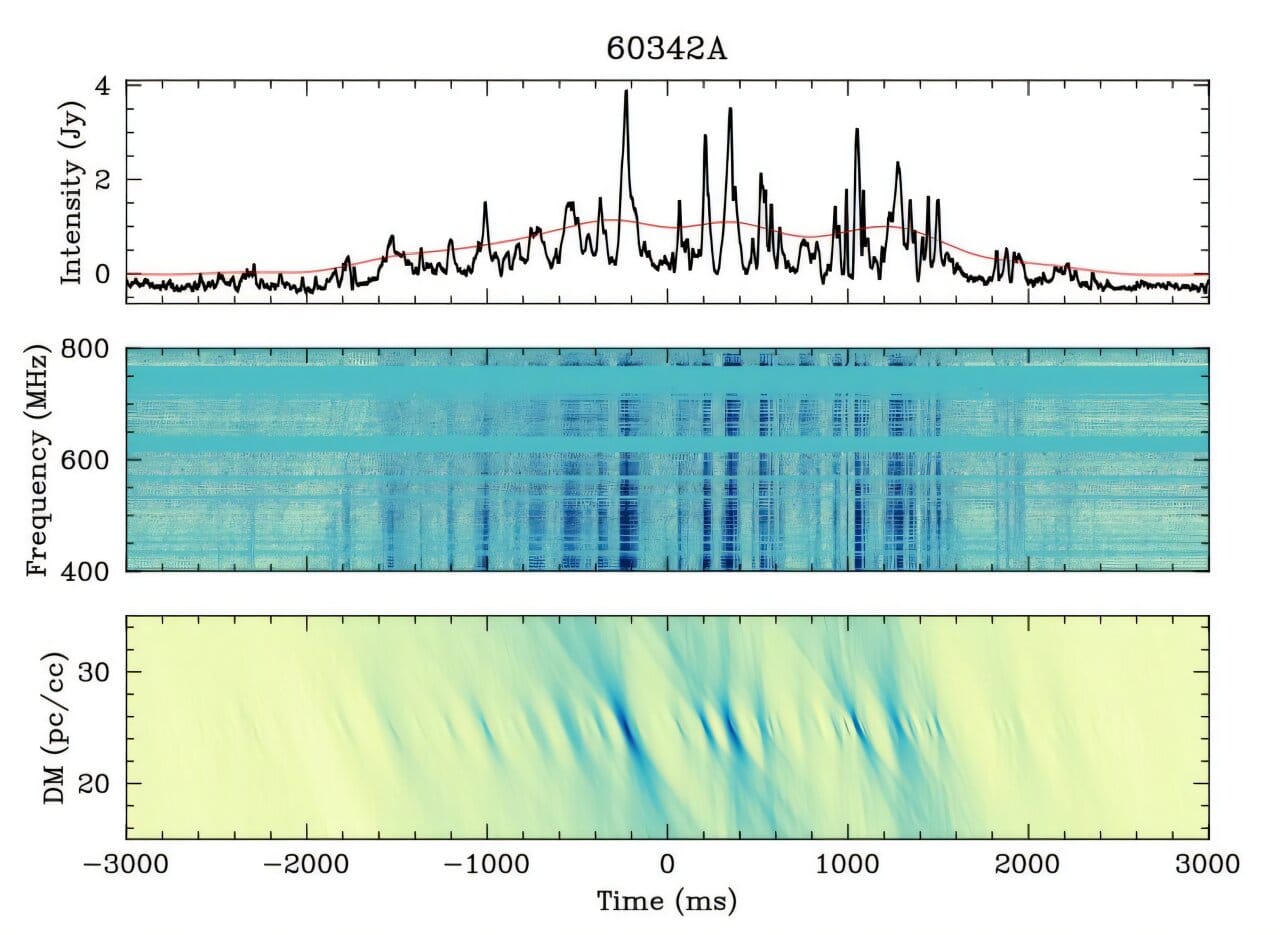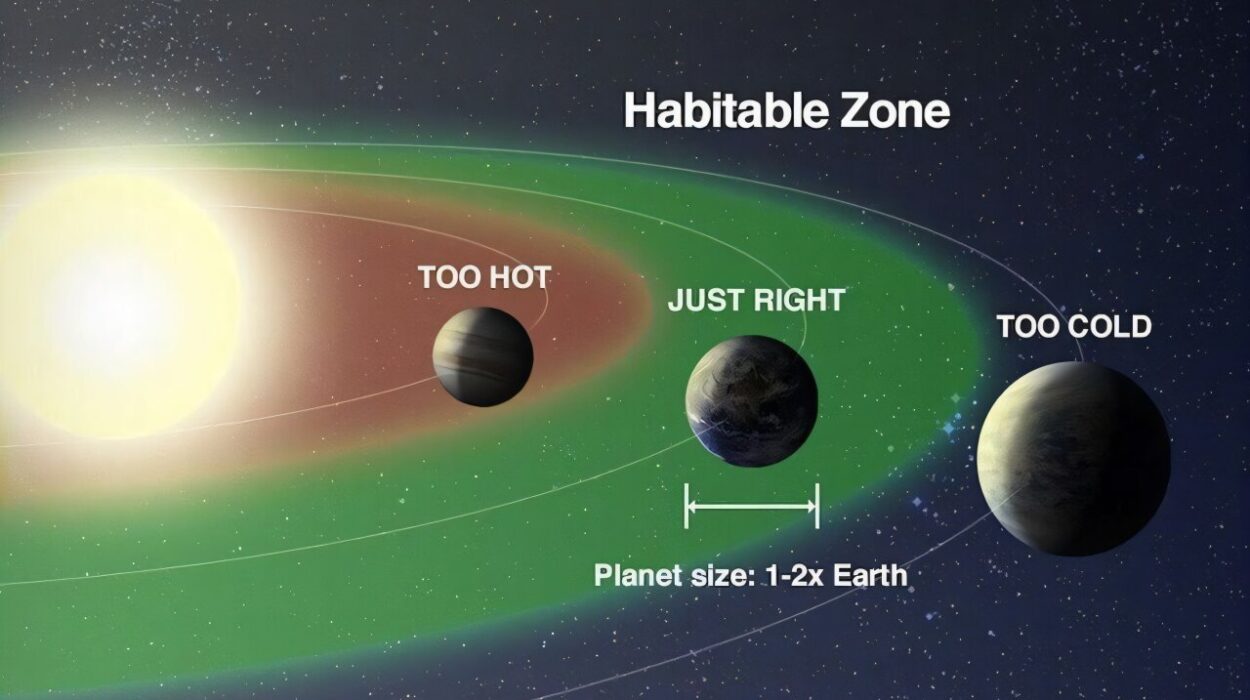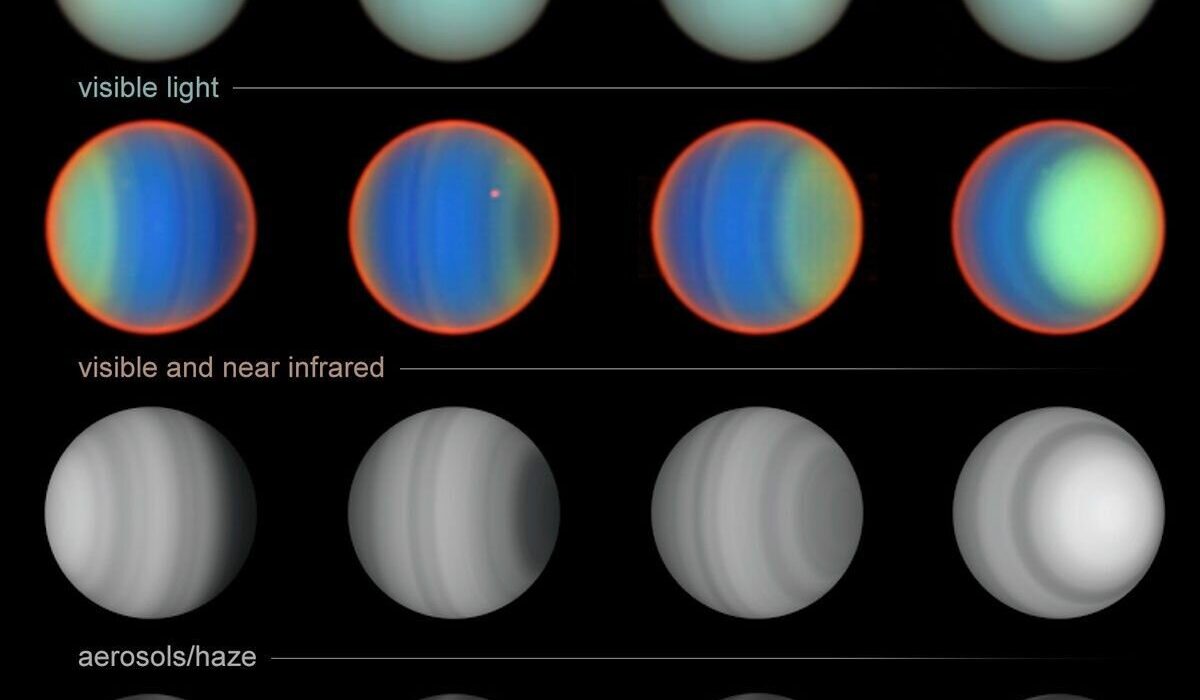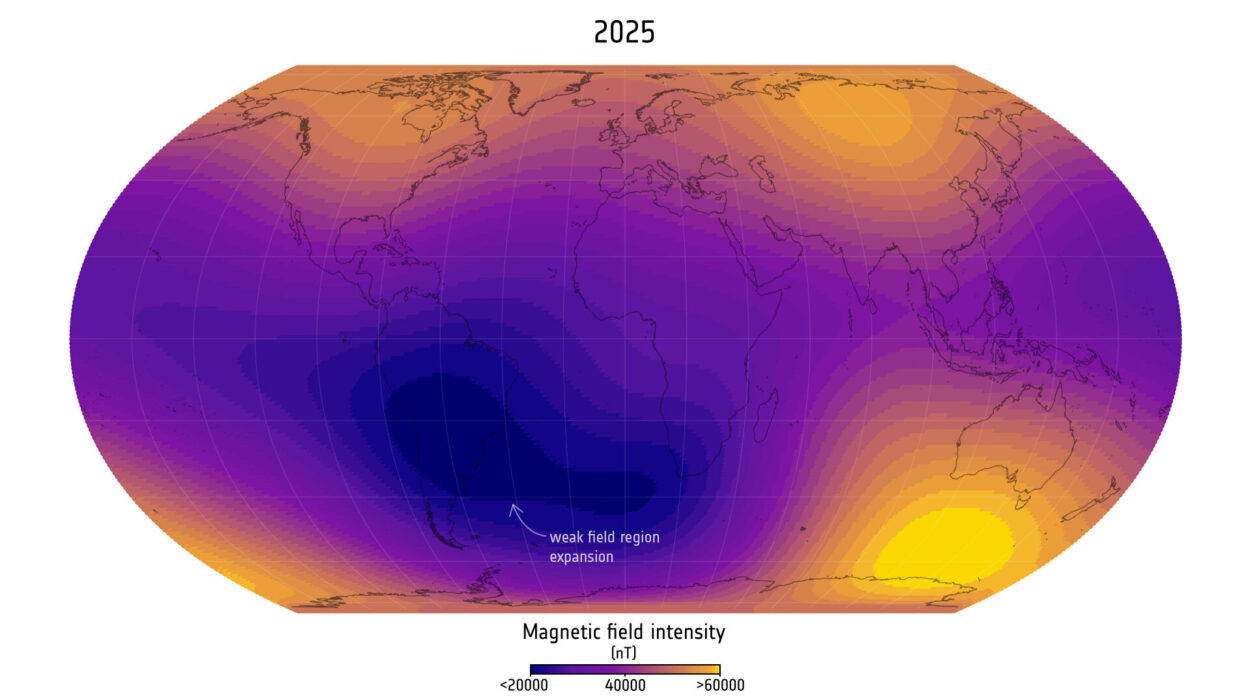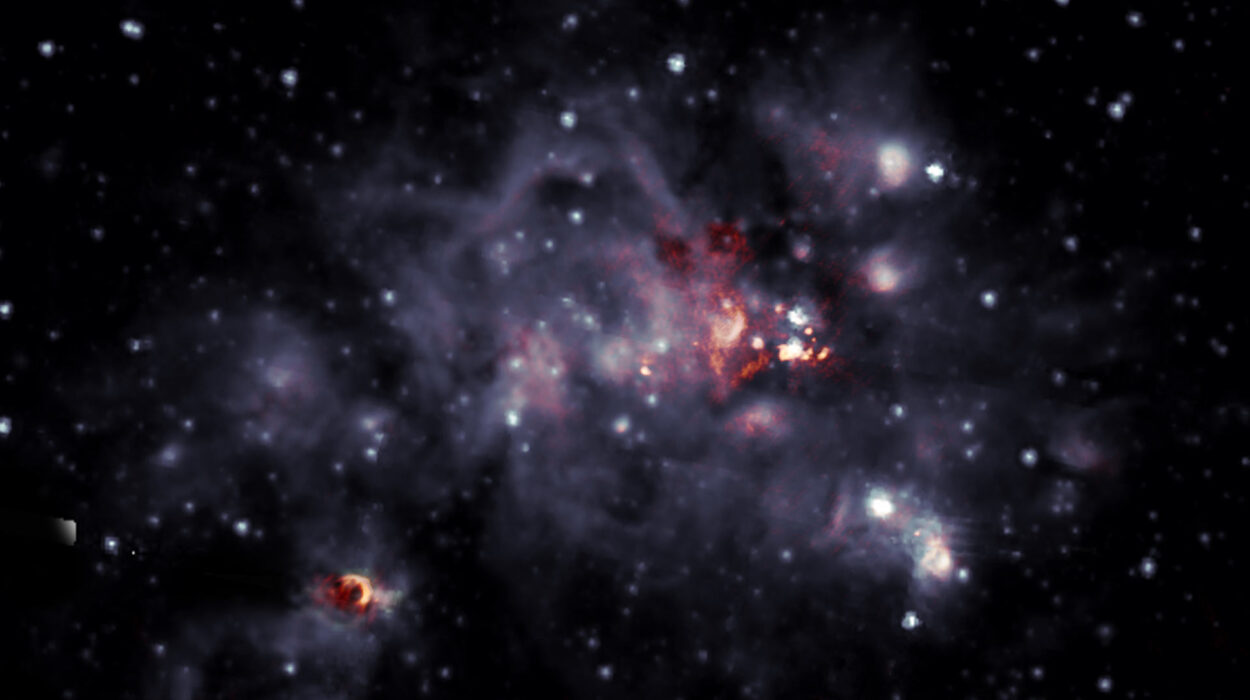High above us, far beyond the twinkling stars we see each night, something extraordinary is sending bursts of radio waves into the cosmic dark. And it’s spinning faster.
Astronomers have discovered a bizarre object called CHIME J1634+44—a radio beacon pulsing with a rhythm unlike almost anything we’ve seen before. The finding, led by Fengqiu Adam Dong from the National Radio Astronomy Observatory, was recently unveiled in a paper posted to the pre-print server arXiv.
Not only does this mysterious object spin on an ultra-slow timescale—its cosmic heartbeat stretches out over nearly 14 minutes—but it’s also speeding up, like a cosmic lighthouse whose rotations are mysteriously accelerating. Even more surprising, its radio bursts are completely circularly polarized—a unique signature hinting at powerful magnetic fields and exotic physics.
“This source is truly one-of-a-kind,” say the astronomers, who believe CHIME J1634+44 may unlock secrets about a strange new class of cosmic objects known as long-period radio transients, or LPTs.
The Strange Clan of Long-Period Transients
Long-period radio transients are a new frontier in astronomy—a small and growing family of objects that flash periodic radio signals with rotation cycles measured not in seconds, like ordinary pulsars, but in minutes or even hours.
Scientists think LPTs might be neutron stars—the collapsed cores of massive stars left behind after supernova explosions. These stellar remnants are so dense that a teaspoon of their matter would weigh billions of tons. Many neutron stars are known as pulsars, spinning hundreds of times per second and emitting beams of radio waves like celestial lighthouses.
But LPTs spin far, far more slowly. Some astronomers believe these sluggish beacons could be magnetars, neutron stars wrapped in magnetic fields trillions of times stronger than Earth’s, capable of bending atoms and shaking spacetime itself. Others wonder if LPTs might even be magnetic white dwarfs—smaller, older stellar cores with powerful magnetic fields.
The truth remains elusive, but each new LPT discovered is like a missing puzzle piece, helping scientists decode the mysteries of the cosmos.
The Unusual Rhythm of CHIME J1634+44
CHIME J1634+44 first revealed itself in October 2022. Astronomers detected its radio pulse using the Canadian Hydrogen Intensity Mapping Experiment (CHIME)—a cutting-edge telescope designed to scan vast swaths of the sky for fast radio bursts, pulsars, and other fleeting signals.
In the months that followed, scientists kept listening. The cosmic beacon blazed to life again in February and November 2023. Altogether, astronomers caught 89 unique radio bursts from CHIME J1634+44 over 4.5 years—a veritable cosmic Morse code flashing from deep space.
Its main pulse period clocks in at 841 seconds (about 14 minutes), but there’s more: a mysterious secondary rhythm roughly every 4,206 seconds (about 70 minutes), hinting at possible binary activity—a cosmic partner influencing its dance.
Circular Polarization and a Spinning Mystery
One of the strangest aspects of CHIME J1634+44 is the shape of its radio waves. Unlike most cosmic radio sources, which emit signals vibrating in random orientations or a single plane, this source’s waves twist into perfect circles.
Such circular polarization is rare in the cosmos and often signals powerful magnetic fields or unique plasma environments. No other known LPT has shown this feature so distinctly.
But perhaps the most astonishing discovery is that CHIME J1634+44 is spinning faster over time. Its period derivative—a measure of how quickly its rotation changes—is significantly negative, indicating a spin-up rate of about -9.03 seconds per second.
“This makes CHIME J1634+44 the first known LPT that is circularly polarized and exhibits a significant spin-up,” the team wrote.
Cosmic Tug-of-War or Ripples in Spacetime?
Why is this mysterious cosmic lighthouse spinning up?
Astronomers have two leading theories. One possibility is that CHIME J1634+44 is feeding off a companion star. As gas and dust spiral onto the compact object, they could transfer momentum and cause it to spin faster—a process known as accretion.
Alternatively, it might be losing angular momentum in a different way—by radiating gravitational waves, ripples in spacetime first predicted by Einstein and detected on Earth in 2015. Gravitational waves could carry away energy and change the star’s rotation in subtle but measurable ways.
For now, there’s no definitive answer. Further observations—especially with telescopes capable of pinpointing the object’s exact location in the sky—will be crucial to unravel the mystery.
A Beacon to the Future
CHIME J1634+44 isn’t just another cosmic oddity—it’s a scientific treasure chest. Its unique properties make it a prime testing ground for theories about how exotic cosmic objects form, spin, and shine.
“CHIME J1634+44 will serve as an important test bed for LPT emission theories and is unique among the array of known transient source emitters,” the researchers conclude.
As telescopes scan the skies night after night, scientists hope that more secrets will emerge from objects like CHIME J1634+44—cosmic clocks whose ticking may one day reveal the hidden physics shaping our universe.
Until then, we watch and listen, ears tuned to the whispers of stars, waiting for the next burst of brilliance from the cosmic dark.
Reference: Fengqiu Adam Dong et al, CHIME/FRB Discovery of an Unusual Circularly Polarized Long-Period Radio Transient with an Accelerating Spin Period, arXiv (2025). DOI: 10.48550/arxiv.2507.05139
